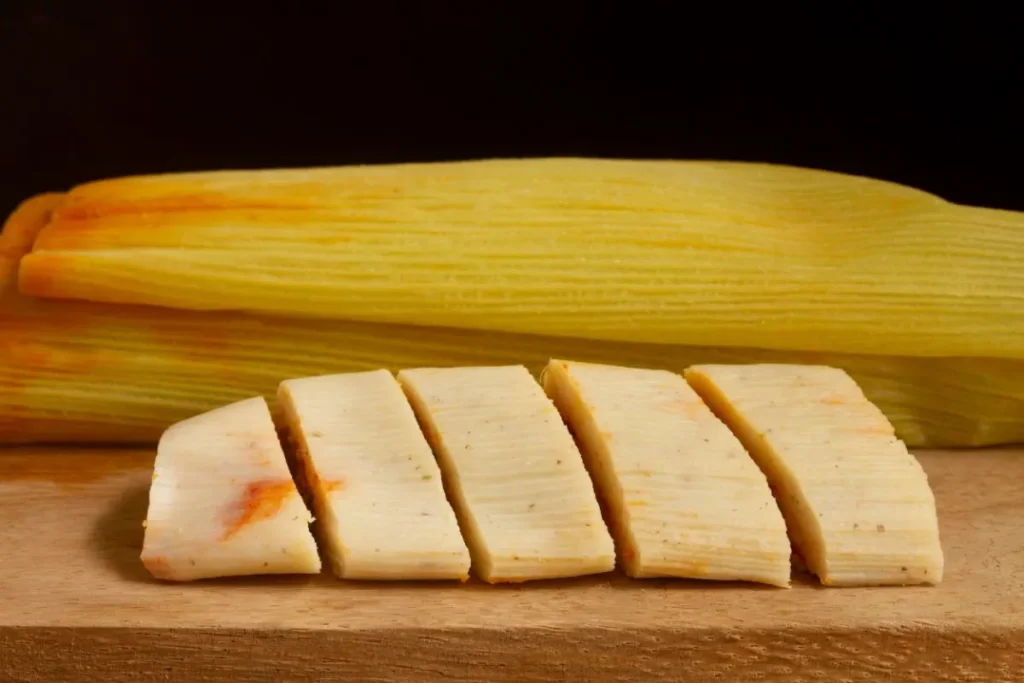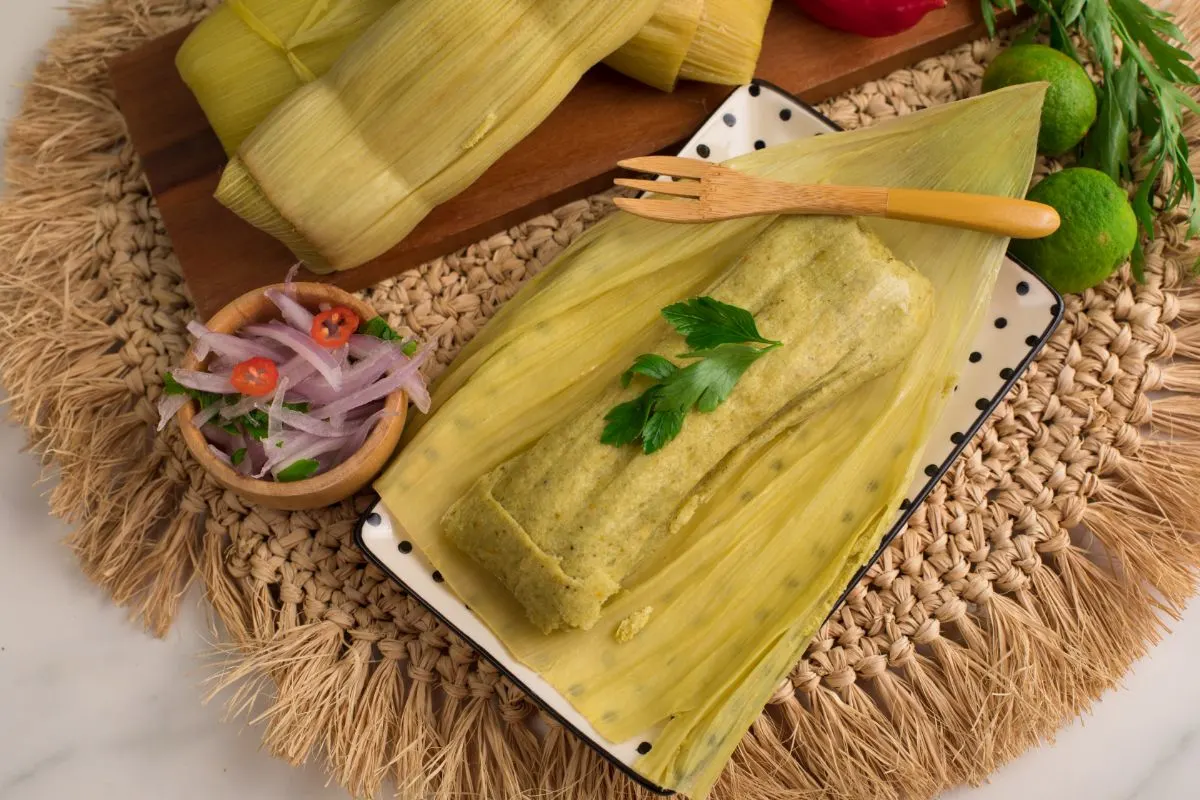Learn how to make beef tamales recipe with masa, shredded beef, and spices. A step-by-step guide to creating delicious and authentic tamales.
Introduction
Tamales, a cornerstone of Mexican cuisine, are much more than a dish; they are a celebration of tradition, family, and flavor. Made from masa (corn dough) and filled with savory or sweet ingredients, tamales are wrapped in corn husks and steamed to perfection. Among the many variations, beef tamales stand out for their rich, hearty flavor and cultural significance.
In this comprehensive guide, we’ll explore the origins of tamales, the essential ingredients, and the tools you’ll need. Moreover, you’ll learn how to prepare the perfect beef filling, make masa dough, assemble the tamales, and cook them to perfection. Whether you’re a seasoned chef or new to tamale-making, this article will equip you with the knowledge and confidence to create delicious beef tamales at home.
Table of Contents
What Are Tamales? A Brief Overview
Tamales are a traditional Mexican dish made of masa dough filled with various ingredients, such as beef, chicken, or vegetables. They are wrapped in corn husks or banana leaves and steamed until cooked. Tamales are a staple of Mexican cuisine, often enjoyed during holidays, festivals, and family gatherings.
Not only are tamales versatile, but they also allow for countless variations based on regional preferences and personal tastes. For instance, tamales are often paired with flavorful sides like beans, rice, or vibrant salsas, making them a hearty and satisfying meal.
The History and Origins of Tamales
Ancient Beginnings
Tamales date back thousands of years to the Mesoamerican civilizations, including the Aztecs, Mayans, and Olmecs. These early cultures used tamales as portable, nutrient-dense food for warriors, travelers, and laborers. The word “tamal” comes from the Nahuatl word “tamalli,” which means “wrapped.”
Interestingly, tamales were made with local ingredients such as corn, beans, and chilies. The portable nature of tamales made them an essential food for soldiers and workers, providing sustenance on long journeys or during battles.
Evolution Through Time
With the arrival of the Spanish in the 16th century, tamales evolved as new ingredients such as beef, pork, and lard became available. Consequently, regional variations developed, reflecting the diverse cultures and flavors of Mexico. Each region added its unique twist, such as different fillings, wrappings, or cooking methods.
Modern Significance
Today, tamales remain a beloved dish, symbolizing unity and celebration. They are especially popular during Christmas, Day of the Dead, and other special occasions. Furthermore, families often come together for tamaladas—gatherings where everyone participates in the tamale-making process, creating not just food but lasting memories.
Key Ingredients for Beef Tamales Recipe
Core Ingredients
- Masa Harina: A type of corn flour, masa harina is the base of the tamale dough. Brands like Maseca are widely available and provide a consistent texture.
- Beef: Choose tender cuts such as chuck roast or brisket for a flavorful filling. The quality of the beef significantly impacts the final taste.
- Corn Husks: Dried corn husks are used to wrap the tamales, giving them structure and a subtle aroma. Ensure they are pliable by soaking them in warm water before use.
Spices and Seasonings
- Chili Powder: Adds depth and heat to the beef filling.
- Cumin and Oregano: Traditional spices for authentic Mexican flavor.
- Garlic and Onion: Essential aromatics for the beef and sauce, enhancing both aroma and taste.
Optional Additions
- Cheese: Adds creaminess and richness to the filling, balancing the spiciness of the sauce.
- Vegetables: Ingredients like roasted peppers, corn kernels, or diced tomatoes can enhance the tamales and add variety.
Selecting Fresh Ingredients
Whenever possible, opt for fresh, high-quality ingredients. For example, fresh chilies, homemade broth, and freshly ground spices can elevate the flavors of your tamales significantly.
Tools and Equipment You’ll Need for Making Beef Tamales Recipe
Essentials
- Steamer: A large pot with a steamer basket is ideal for cooking tamales evenly. Bamboo or metal steamers work equally well.
- Mixing Bowls: For preparing the masa and beef filling. Sturdy bowls help streamline the preparation process.
- Spreader or Spoon: To evenly spread masa on the corn husks. A spatula or dedicated masa spreader can simplify this step.
Specialized Tools
- Tamale Press (Optional): Speeds up the process of spreading masa. While not essential, it can save time for larger batches.
- Kitchen String: Useful for tying tamales if needed, especially when making larger or uniquely shaped tamales.
Having the right tools ensures a smoother cooking process and consistent results, particularly when making tamales in large quantities.
How to Prepare Beef for Tamales Recipe
Choosing the Right Beef Cut
Select cuts like chuck roast or brisket for their rich marbling and tenderness. These cuts work well for slow cooking, ensuring a juicy and flavorful filling. For a leaner option, sirloin or flank steak can also be used, though additional seasoning may be required to enhance the flavor.
Cooking Techniques
- Slow Cooking: Season the beef with salt, pepper, and spices. Cook it in a slow cooker or pressure cooker with onions, garlic, and broth for 6-8 hours until it’s tender enough to shred. Consequently, the slow cooking process infuses the beef with spices, creating a flavorful base.
- Shredding the Beef: Once cooked, use two forks to shred the beef into fine pieces. Ensure the texture is consistent for even filling distribution.
Making the Sauce
- Ingredients: Dried guajillo and ancho chilies, garlic, onion, cumin, and beef broth.
- Preparation: Soak the chilies in hot water until soft, then blend with the other ingredients to form a smooth sauce.
- Combine: Mix the sauce with the shredded beef, ensuring even coating. Additionally, simmer the mixture briefly to meld the flavors.
Step-by-Step Process to Make Beef Tamales Recipe

Preparing the Masa Dough
- Ingredients:
- 4 cups masa harina
- 1 cup vegetable shortening
- 2-3 cups warm beef broth
- 1 teaspoon baking powder
- 1 teaspoon salt
- Instructions:
- Beat the vegetable shortening until fluffy. This step is crucial for achieving light and airy tamales.
- Gradually add masa harina, baking powder, and salt.
- Slowly mix in warm broth until the dough is soft and pliable. The dough should have a consistency similar to peanut butter.
Assembling the Tamales
- Soak Corn Husks: Submerge the corn husks in warm water for 30 minutes until pliable.
- Spread Masa: Lay a corn husk flat and spread a thin layer of masa, leaving a border around the edges.
- Add Beef Filling: Place a spoonful of beef filling in the center.
- Fold: Fold the sides of the husk over the filling, then fold the bottom upward. Ensure the tamale is securely wrapped to prevent leaks during steaming.
Steaming the Tamales
- Set Up the Steamer: Line the steamer basket with extra corn husks to prevent sticking.
- Arrange the Tamales: Place the tamales upright with the open ends facing up.
- Cook: Steam for 1.5 to 2 hours, checking periodically to ensure the water doesn’t run out. Moreover, monitor doneness closely to avoid overcooking.
- Check Doneness: The masa should easily pull away from the husk when done.
Serving Suggestions
Serve tamales with salsa verde, pico de gallo, or a side of rice and beans for a complete meal. Additionally, add a sprinkle of fresh cilantro or a squeeze of lime for a burst of freshness.
Variations of Beef Tamales Recipe
Regional Variations
- Northern Mexican Tamales: These tamales often include ingredients like cheese and spicy chilies, creating a bold and hearty flavor.
- Oaxacan Tamales: Wrapped in banana leaves rather than corn husks, these tamales are steamed to perfection and often feature mole sauce with the beef filling.
- Veracruz-Style Tamales: These tamales use a combination of beef and other proteins like chicken or shrimp, offering a unique blend of flavors.
Modern Twists
- Spicy Jalapeño Beef Tamales: Add chopped jalapeños to the beef filling for an extra kick.
- Beef and Sweet Corn Tamales: Mix sweet corn kernels with the beef for a sweet-savory combination.
- Tamale Pie: Deconstruct traditional tamales and bake them as a layered casserole for a simpler preparation.
Dietary Adjustments
- Gluten-Free: Ensure that all ingredients, especially the masa harina, are certified gluten-free.
Experimenting with these variations allows you to customize tamales to suit your taste and dietary preferences.
Tips for Perfect Tamales Recipe
- Prepare Ahead: Make the beef filling a day in advance to save time.
- Avoid Overfilling: Use the right amount of filling to prevent tamales from breaking.
- Test Masa: Drop a small piece into water; if it floats, it’s ready to use.
- Steam in Batches: For large quantities, steam tamales in batches to ensure even cooking. Additionally, keep a close eye on the water level to avoid burning.
Nutritional Information (Per 100g)
| Nutrient | Amount |
|---|---|
| Calories | 250 |
| Protein | 10g |
| Fat | 12g |
| Carbohydrates | 25g |
| Fiber | 3g |
| Sodium | 450mg |
FAQs About Beef Tamales Recipe
What are beef tamales made of?
Beef tamales are made of masa dough, shredded beef filling, and corn husks. The beef is typically seasoned with chili sauce and spices for a rich flavor.
What are real Mexican tamales made of?
Real Mexican tamales use masa dough, fillings such as beef, chicken, or vegetables, and are wrapped in corn husks or banana leaves.
What are the two types of tamales?
The two main types of tamales are sweet and savory. Sweet tamales may include ingredients like fruit or chocolate, while savory ones are filled with meat, cheese, or vegetables.
What’s the best way to cook tamales?
The best way to cook tamales is by steaming them in a large pot or tamale steamer for 1.5 to 2 hours. Ensure they are upright to cook evenly. Additionally, allow them to rest for a few minutes after steaming for the flavors to settle.
Conclusion
Beef tamales are a delicious and time-honored dish that brings people together. With their rich flavors and cultural significance, making tamales is a rewarding culinary experience. Therefore, follow this guide to create authentic beef tamales at home, and don’t forget to share your results with friends and family. Happy cooking!

